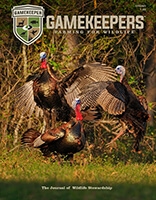Q: Todd, I bought some Non-Typical Clover, Maximum and Deer Radish from your BioLogic website and planted it on July 28th. The Maximum and Deer Radish is growing great but the clover is just sitting there. They both came up about a week after I planted but the Non-Typical has been left in the dirt…pun intended. Did I get bad seed with the Non-Typical or do you think I did something wrong? Oh yea, I live in southern Wisconsin, Southwest of Madison if that matters.
A: This is a great question, and the short answer is; no, the seed isn’t bad, and you didn’t
necessarily do anything wrong, but you may want to plant one of the blends at a different
time in the future, or simply give it a little more time.

First, if the seed germinates it’s good…period. Seed either germinates or it doesn’t. After that, everything depends upon the site that you’ve selected, growing conditions, your management practices and how Mother Nature treats you. Essentially, you’re seeing the difference between an annual (Maximum & Deer Radish) and a perennial (Non-Typical). Most all perennials are “slow starters.” A perennial needs a good 45 to 60 days of growth after germination to establish a root system under the surface so it will indeed be perennial and recurrent for you and come back the following year after dormancy. It’s the plant’s way of ensuring it survives.
On the other hand, most annuals shoot out of the ground like they’re off to the races. An annual needs to bolt to flower and seed to ensure its survival. So you are just experiencing the different types of plants doing what God intended they do to propagate their species.
The perennial is just sitting there above the surface, but below the surface the roots are growing fast. In the north, because a perennial needs this time to establish its root system, they have been traditionally planted during the spring—since moisture is the most important determinant for success. From the time the “fall rains”—that actually habitually begin during the late summer—bring adequate moisture, until the time you get your first killing frost (typically mid-September where you’re located) you’re not always assured enough time. It doesn’t mean that your Non-Typical won’t survive and come back for you next spring—I would bet that it will come roaring back next spring.
If you’re in the northern tier of US states or Canada, a perennial’s odds for surviving are much greater if it’s planted during the spring because they will get the necessary time to
develop a root system. Where you are located I would estimate a planting time about the same as I have in here in Minnesota – around the first two weeks in May should be prime time for planting perennials. However, some people in the north plant perennials during the late summer to avoid the “summer weed cycle.” Often when planting during the spring, since the clovers germinate and seem to sit there for a while before the fill in the space around them, weeds and grasses can take root around them. When planting during the late summer this is much less of a headache. Herbicide and mowing can fix the weed problem, but it’s still a bit more work. However, as I mentioned, the most important determinant for success is moisture, and that is most likely to be best during the spring.
Next spring, I would keep a watch on your clover throughout April. If you have bare spots I would overseed in early May with more Non Typical (or Clover Plus to add some diversity to the stand). As long as you made sure your pH was correct before you planted (with Non Typical 6.2 to 7.0), this should build a beautiful perennial plot. Just remember that perennials are slow starters compared to annuals.
-
Join our weekly newsletter or subscribe to Gamekeepers Magazine.
Your source for information, equipment, know-how, deals and discounts to help you get the most from every hard-earned moment in the field.









